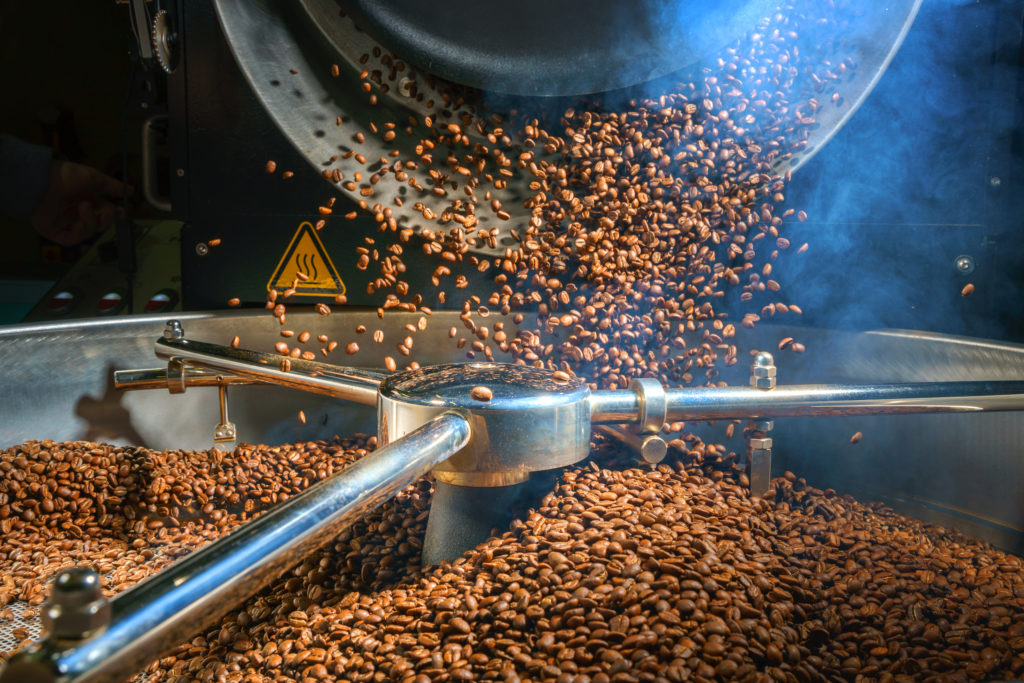Roasting speciality coffee
A crucial stage between planting and the consumer’s final cup, roasting is the art of cooking the green coffee bean and bringing out its full aroma.
This stage comes at the end of the chain, after the coffee cherry has been harvested, ‘pulped’ and dried. This is where all the talent of the roaster comes to the fore, in the work on the flame!
When you buy your coffee beans, you will have noticed that the appearance of each bean can be totally different: light or dark, glossy or matt, their appearance is the result of the roaster’s know-how, which guarantees perfect mastery of this science.
But as with the roasting of beer barley or cocoa beans, coffee roasting is a delicate stage that must respect the history and origin of each bean.
Indeed, speciality coffee often offers a unique richness of flavour, with each bean presenting more than 800 different aromas. In comparison, wine has around 600 aromas and beer around 1,200.
Because of the quality of the beans and their specific aromas, speciality coffees require very special attention when roasting, which means they are roasted to order.
While the taste of coffee depends to a large extent on this know-how, let’s take a look at the different stages and the main roasting families that exist…
And above all, how are speciality coffees roasted?
During the roasting process, two phenomena occur: the Maillard and Stucker reactions. The first is responsible for the chemical interaction between sugars and proteins, which reveals the different aromas characteristic of coffee. The second is responsible for browning grains under the effect of heat. It is this browning that the roaster will visually monitor from start to finish to ensure that the process is running smoothly. Roasting is therefore above all a sensory stage…
During the roasting stage, the beans go through 3 main colouring stages:
The first stage occurs when the grains begin to cook in the oven drum. This is the drying process which dehydrates and enlarges the coffee beans, giving them a yellow tinge: this is known as the “Yellow Point”. This is the start of the Maillard chemical reaction.
The grains then begin to brown during the caramelisation stage, and the flavours appear and spread. This stage lasts until the first crack, when the heat causes the grains to crack and produce a characteristic sound, a slight “Pop! This is the Stucker reaction…
The final stage is sublimation, a key stage in which the roaster uses all his knowledge and experience. The roaster will give the beans their aromatic qualities by working on their roundness on the palate, their acidity and bitterness. This stage, when roasting speciality coffees, must not go beyond the Second Crack, otherwise the aromatic curves of the beans will collapse and cover the coffee with a dark, oily colour. The sugar will then have caramelised the beans and they will hide their defects, giving them a very bitter taste. This type of roasting is very common in industrial products and often results in poor quality beans with little natural flavour.
There are three main types of roasting:
- Light roasting: This type of roasting develops flavours that lean towards acidity and freshness. It brings out the full richness of the different origins of the grapes and reveals very fruity, vegetal and floral notes. The mastery of this roasting process is highly specialised, but allows us to sublimate the exceptional quality of the beans. At Cafés du Monde, we’re big fans of gentle extraction roasting. The cups are juicy!
- Medium roast or monk’s robe: The monk’s robe roast is a typically French roast, providing a perfect balance between acidity and bitterness. Coffee is considered gourmet. The flavours are varied and the cup has a sweetness that is suitable for both espresso and mild extraction. This coffee will be full-bodied and round on the palate.
Dark roast: Emblematic of Italian coffees, this gives the cup a strong bitterness and low acidity. Unfortunately, this advanced roasting dissipates much of the original flavour of the beans. The aromas present are burnt and do not allow you to benefit from the intrinsic quality of the grains. This type of roasting, which is never used to roast speciality coffees, does not bring out the best in high-quality green beans.
In short, it is the perfect knowledge of coffee beans, their origin and their history, that enables the whole Cafés du Monde team to offer you a tailor-made roasting for each coffee bean. Our ultra-fresh coffees are distinguished by the quality of their beans and their powerful aroma, to tantalise your taste buds. Get ready to travel to the 4 corners of the world with us!
And I promise, you’re going to love drinking the cup! 😉



